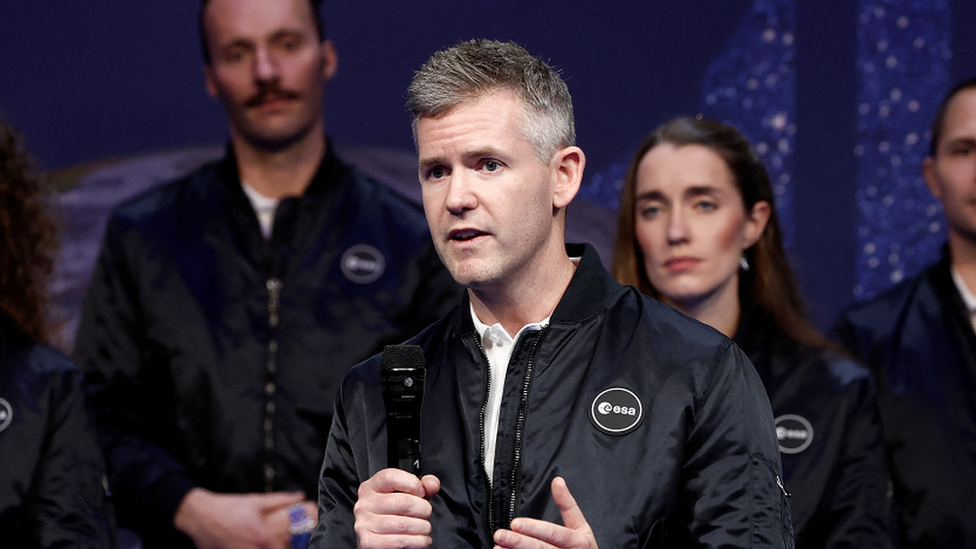John McFall: Para-astronaut on a mission to open up space
- Published
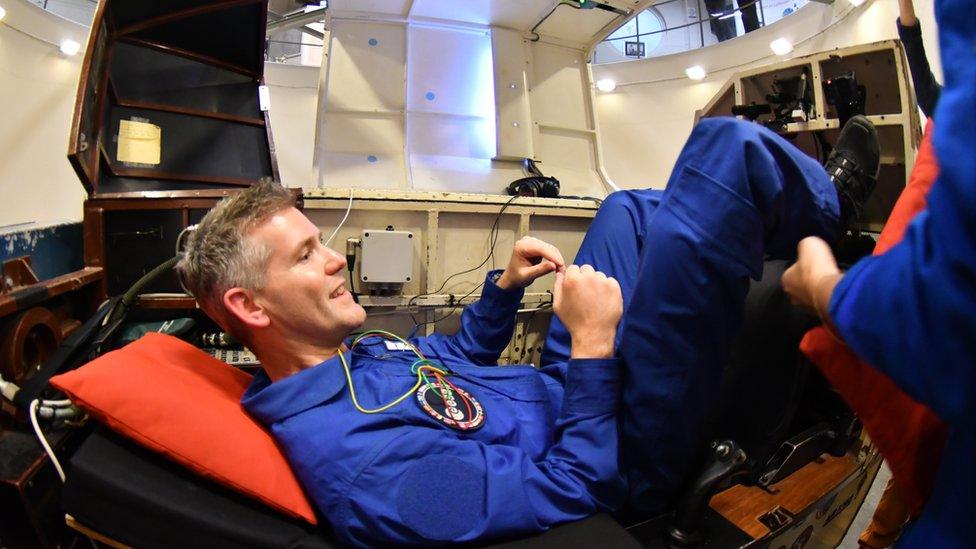
Every trainee astronaut has to take a spin in a giant centrifuge
Former Paralympian John McFall is working with the European Space Agency on a ground-breaking study to see if it's feasible for someone with a physical disability to live and work in space. BBC News has been following his progress as he undergoes astronaut training.
It's a test that any budding astronaut has to go through. But it's not for the fainthearted - or the claustrophobic.
With a clang, the door slams shut, enclosing John McFall in the darkness of a coffin-sized metal box.
The spinning begins.
He's in a giant centrifuge, being whizzed around and around, to mimic the extreme gravitational forces of a rocket launch - and the even more extreme G-Forces of coming back down.
"The faster it spins, the higher the G load," John explains.
"And today we're going to be going up to about 6 Gs - so six times the force of gravity. It replicates what it would be like during re-entry into the atmosphere in a Soyuz capsule."
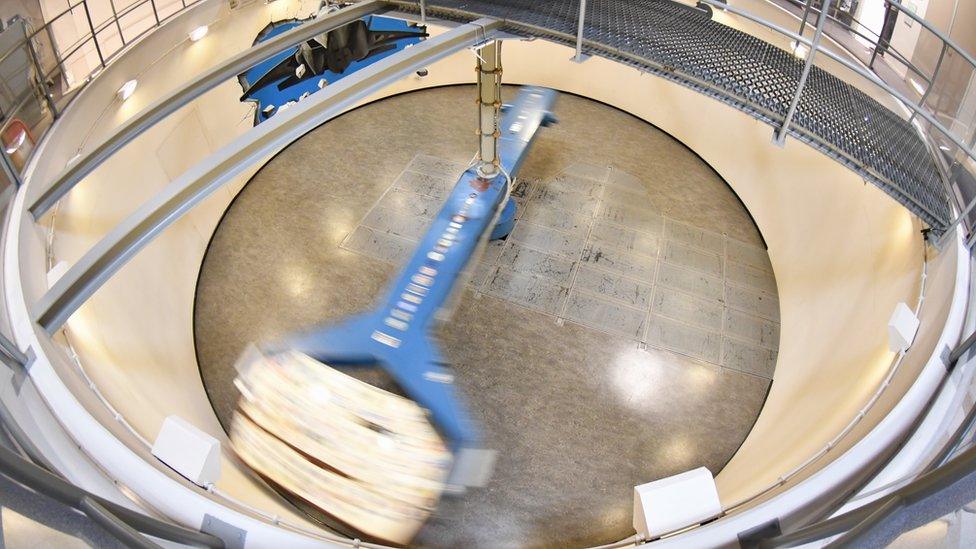
The machine mimics the extreme gravity astronauts would feel during lift off re-entry
The test is part of John's training programme with the European Space Agency.
In 2022 he was selected as their first astronaut candidate with a physical disability, to work on a ground-breaking study, external to see if he could go to space safely.
John's an amputee, he lost the lower part of his right leg in a motorcycle accident when he was 19.
He usually wears a hi-tech prosthesis. But he's taken it off to test the effects of the centrifuge on his upper-leg.
ESA flight surgeon Maybritt Kuypers is monitoring him.
"It's the first time we have had an amputee in the centrifuge," she explains.
"The astronaut is basically lying on their back in a sort of seated position, so this influences the blood flow - also in the leg. We were curious to see how that would affect him, but it went really well."
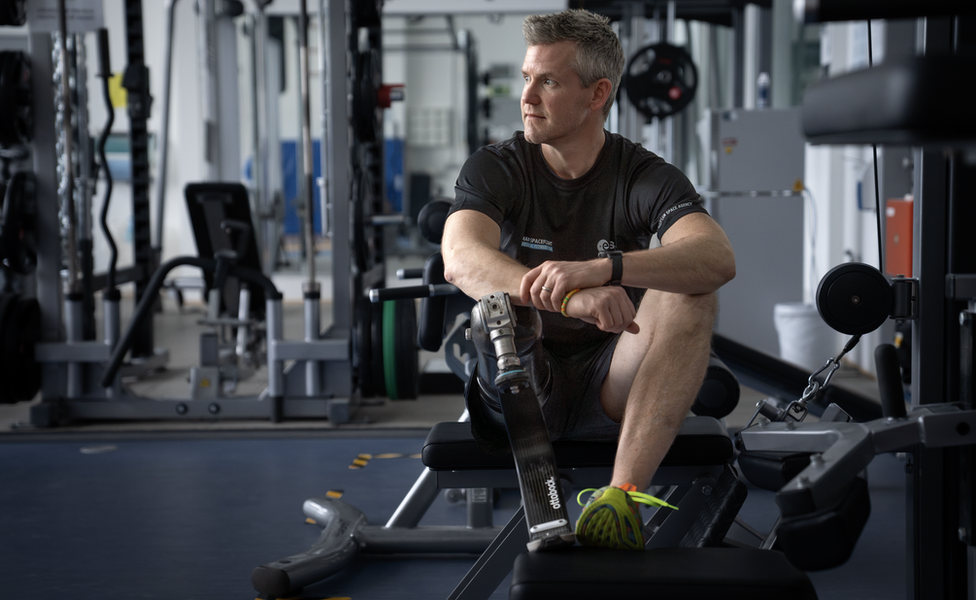
John wears a special blade for running
John's paused his career as an orthopaedic surgeon to take a leap into the unknown of astronaut training.
He's moved from the UK to the European Astronaut Centre in Cologne, Germany.
He isn't guaranteed a space flight, but this study will see what needs adapting to make it possible - the spacecraft, spacesuits or his various prosthetic legs.
Today he's assessing his running blade.
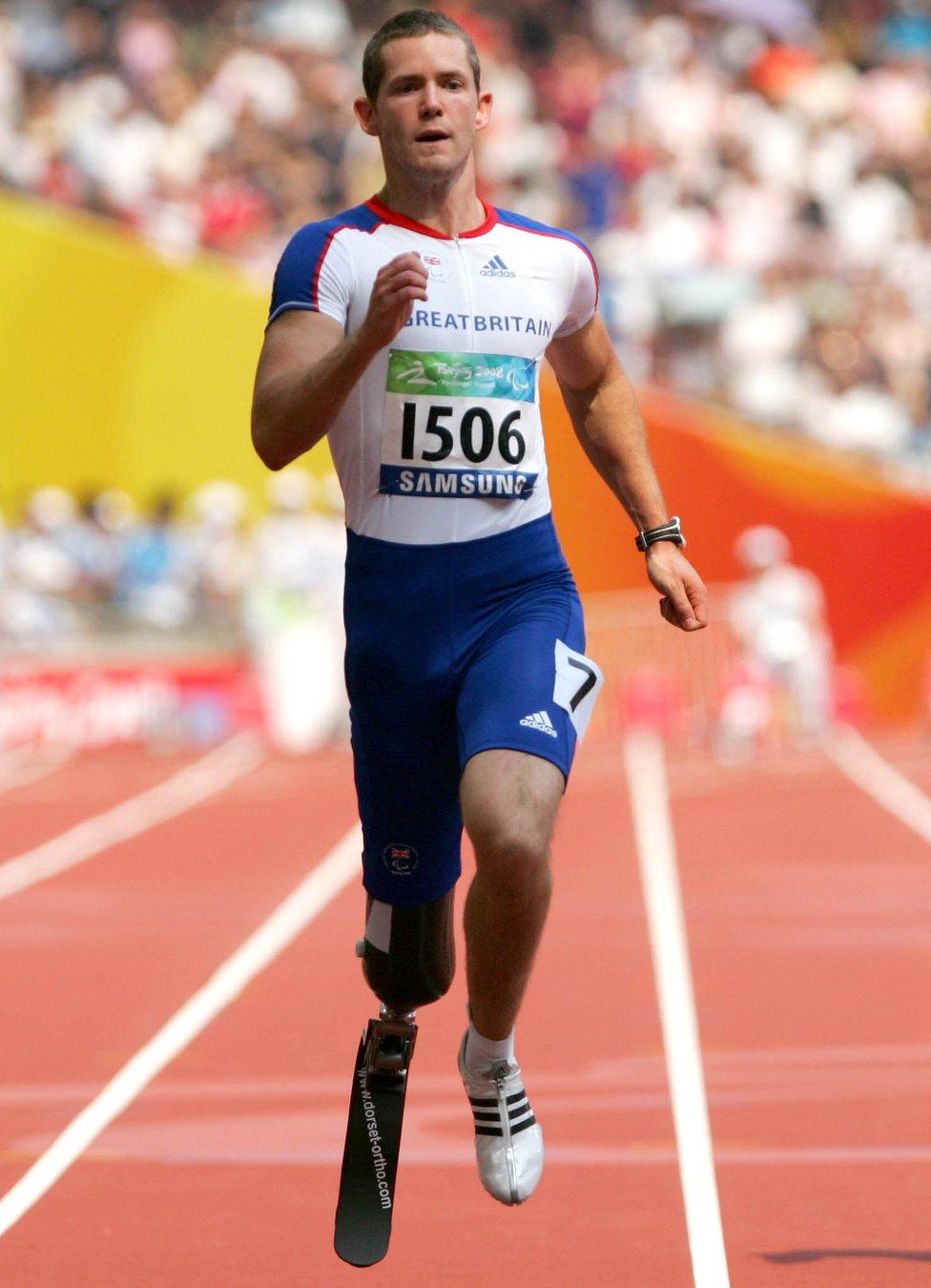
John McFall won bronze at 2008's Paralympic Games in China
Sport is a big part of his life, John's a former medal-winning Paralympic sprinter. And keeping fit in space is crucial to maintain muscle mass and bone density.
John's using a special anti-gravity treadmill, which recreates the weightless conditions on the International Space Station (ISS). A pocket of air lifts him slightly, artificially making him lighter.
He explains how his body weight pushes his blade into the ground, compressing it so it bounces back up again to give him a natural spring to propel him forward.
But the treadmill lightens him to about 80% of his body weight, so his blade doesn't work as well.
"I notice that the blade is too stiff," he explains. "That's because I'm lighter and putting less force into the blade, so it's bending less, and therefore giving me less spring back."
He thinks he'd need a bendier blade - but there's more.
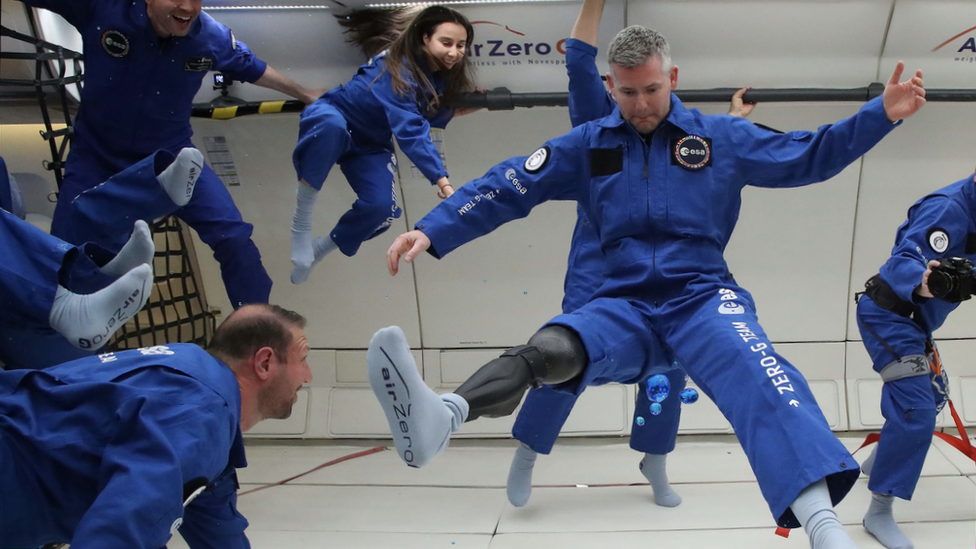
A parabolic flight gave John the chance to see how his prosthetic leg would fare
On a parabolic flight last year, where John experienced weightlessness for the first time, he found his day-to-day, hi-tech, microprocessor prosthetic leg would need recalibrating.
In fact, John thinks he might need several prosthetic legs on the ISS.
"There would be a prosthesis for running, a back up for the microprocessor prosthesis, and then there's the mechanical one, which will probably need to be worn inside the spacesuit for launch and return," he explains.
"I'll need a bit of a wardrobe of prosthetic hardware."
ESA is the first space agency to carry out a project like this.
Until now, John's disability would have prevented him from becoming an astronaut. But Frank De Winne, the head of the European Astronaut Centre, wants to change that.
"We think this is a great opportunity because we have so many great talents - people that have a disability, like we see with John," he says.
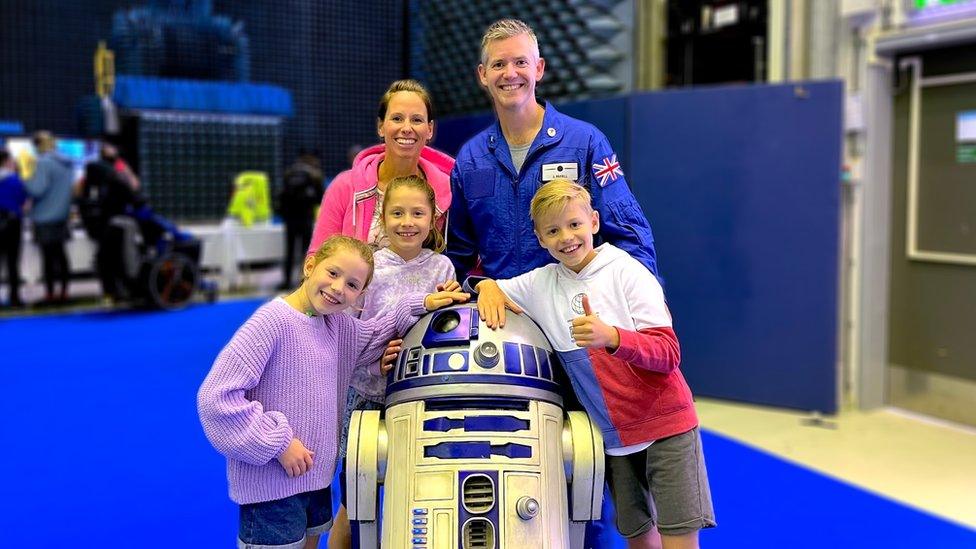
John's family has moved to Germany for the study
"Why should we not try to harvest this talent for great missions like astronaut missions?"
The move to Germany is a big change for his wife Sonia, a former Olympic gymnast, and their three young children Fin, Isla and Immy.
Around the dinner table, they talk about their dad's new job. Their friends think it's "cool". Fin can't believe his dad has swapped being a doctor for a job where he might be sent "into the big black void" of space.
Sonia says John's new career is 100% right for him.
"It's a big thing in our family that you go for every opportunity," she says. "And for me, this was an opportunity and he's gone and taken it. I hope he gets the reward for it, which is eventually going to space and showing people that it's possible."

The World's First Para-astronaut
From a taste of space on a parabolic flight to taking a spin in a giant centrifuge, follow ESA astronaut John McFall as he studies whether it's possible for someone with a disability to go into space.

Back at the centrifuge, it slows to a stop and the door clangs open. John gives a thumbs up.
"It was brilliant," he says with a grin.
"And do you know what? I didn't actually notice my right leg at all throughout the whole thing. It was probably the most comfortable part of me throughout the whole process. And that's really good to know for this flight study."
John's about halfway through the project and so far hasn't found anything that would stand in the way of a mission.
And every taste of space is confirming to John he's made the right choice, because this could change people's perceptions.
"I like to think that it will broaden their horizons and their knowledge of what someone with a physical disability is capable of," he says.
"But I also hope that they see me as just John. Because I am just John and I want to be an astronaut and I happen to have a physical disability. This is the message that we're trying to deliver."
Follow Rebecca on X, formerly known as Twitter, external
Related topics
- Published28 April 2023
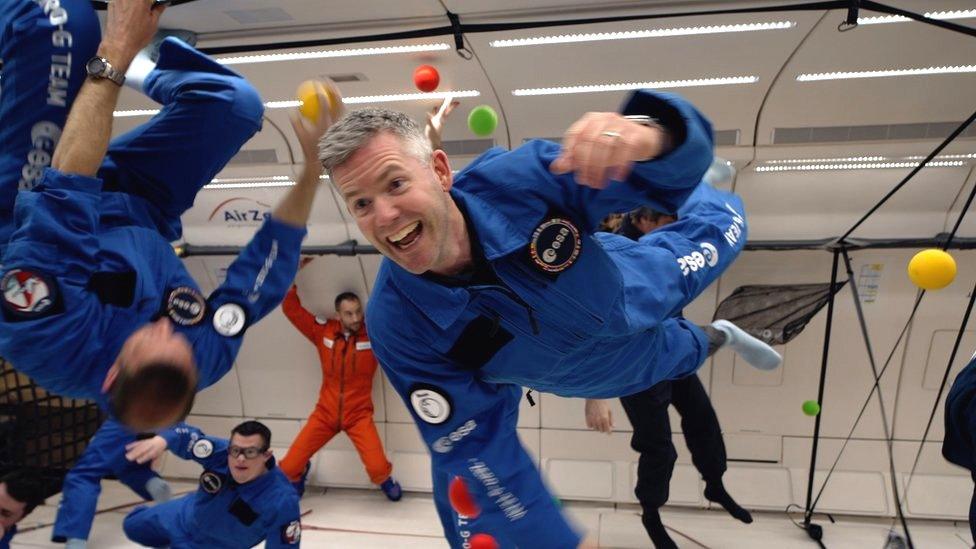
- Published23 November 2022
